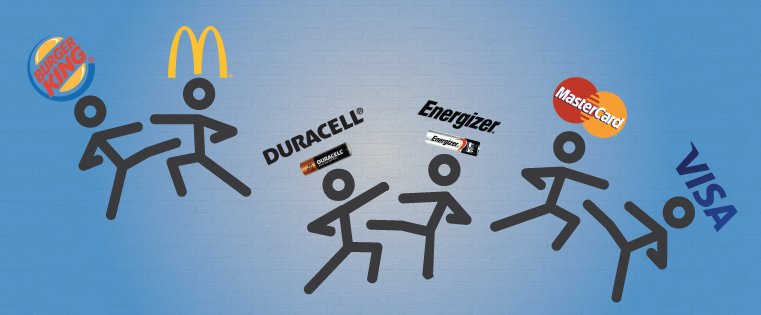 I was recently speaking with a prospective client who runs a growing retail operation looking to expand its e-commerce strategy. She was a savvy business head who tried to stay current with marketing trends — let's call her Brenda for the sake of this article.
I was recently speaking with a prospective client who runs a growing retail operation looking to expand its e-commerce strategy. She was a savvy business head who tried to stay current with marketing trends — let's call her Brenda for the sake of this article.

Brenda wanted to know how to build up her e-commerce strategy. In particular, she was interested in making her website mobile responsive because she knew it was an emerging Web design best practice given the rapid rise of mobile e-commerce during the past few years.
Brenda had spoken with several design agencies and was curious about what we'd do differently. She had a good sense of the market but wanted someone who could be a strategic partner as much, if not more so, than a tactical partner.
Brenda asked, "Can you tell me how you would design my website to be responsive? What would you do with navigation? What would you do with product images and product information? How would you organize things?"
I explained, "These were great questions and all important elements to designing a successful mobile responsive website, but I'd like to be frank, you're already grounding the project in the nitty-gritty."
I could tell she was mildly taken aback, so I immediately followed, "You told me that you're looking for someone to help you think strategically first, and I think I have a great way for us to shift our thinking."
"Tell me about some of your own most recent retail commerce experiences, online and offline. Where were you when you were trying to make purchases and what were you thinking?"
She replied, "Well, being a small business owner, I'm almost always rushing from one thing to the next and barely have time to squeeze in shopping. I try to take advantage of sales and promotions but I often find myself missing out or forgetting about offers."
"And how did these retailers' websites play a role in your shopping experience?" I asked.
"When I remember, I'll try and pull up my phone while I’m in the store to see if there are any promotions,” Brenda said. “I might occasionally buy something on the road but half the time when I purchase a products I actually continue getting the same promotions or marketing materials, which eventually puts me in the habit of ignoring the vendor entirely."
"You know what's interesting, Brenda? You didn't once mention how these vendors organized their navigation or laid out product information."
Pausing, she replied, "What does that matter?"
"What you described were the situations and emotions you encountered while shopping. You based your stories around the context of your commerce experience, not the content. Please understand that how you organize your navigation and product information is important when thinking about making your website mobile responsive, but these things constitute the content of your customers commerce experience, not the context for why or how they actually make purchases.”
Most e-commerce retailers spend most of their energy on content strategies when it comes to “thinking mobile” and miss the opportunity to address context strategies. Consumers are swayed much more by the situations, environments and emotional states they're in when it comes to making a purchase than by the structure/order of your website. Of course a website that is difficult to navigate will have a lower conversion rate, but it's because of the frustration that builds inside your customers as a reaction to a poorly designed site.
"Brenda, I'd like to challenge you with a few contexts that we could explore when thinking about your e-commerce strategy and share some things I've observed and technologies in the marketplace."
Three major contexts deserve special attention when crafting an e-commerce strategy:
Integrating the Offline Retail Experience with Online E-commerce Purchases
One of our clients, Johnny Cupcakes, recently implemented a new POS system that ties in directly with its e-commerce platform. It can now sync customer data and purchase reporting between offline and online efforts seamless. Now when customers enter the store and speak with a sales rep or approach the checkout counter, the retailer can tap into their profile, including online order history, for a better understanding of the customer. This allows them to take advantage of the context of past online abandoned orders to see if there might be products the customer thought about purchasing, which could then be offered in store at that moment.
Introducing Location-Aware Technology to Provide Relevant Real-Time Information
Brenda noted in our conversation the issue of forgetting she had been previously offered a promotion, which she failed to take advantage of. What if, based on her physical location in a retail store, she could be reminded of that promotion in real time? The company, Gimbal's, has built a location-aware SDK that can be used by developers and marketers to build physical, trigger-based events, including sending a reminder of a promotion that Brenda might have previously received in her inbox. In this situation, the retailer can take advantage of her physical context to drive sales.
Bridging Referrals Offline and Online
Commerce is often conducted in a social environment (e.g., an evening out with friends) or the subject of social encounters (e.g., sharing an exciting purchase with friends). It is naturally driven by word-of-mouth referrals offline and online through social media. Many retailers are trying to bridge the offline/online gap with solutions such as Curebits, which provides a technology called "Retail Referrals." Retail Referrals offers customers the opportunity to “share” their purchases with friends, via email or social media, while in the store and instantly be rewarded with store credits or promotions if a referee makes the purchase. This takes advantage of a social context around shopping, while marrying the retailer’s brick-and-mortar/e-commerce efforts.
We often find that clients, including e-commerce retailers, get caught up in their content strategy to the detriment of context strategy. Designers will do better by helping clients better understand how their customers (the end consumers) will experience commerce in different contexts.









